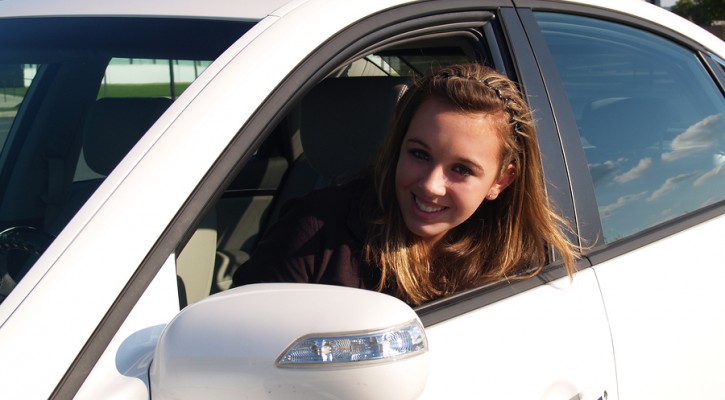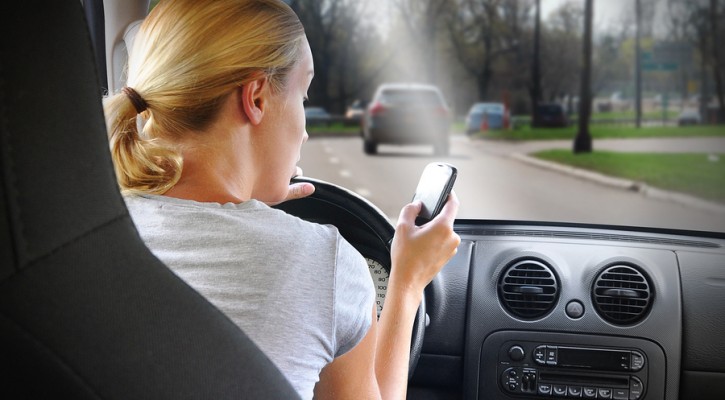Monthly Archives: December 2008

Why You Should Take a Practice Permit Test Course
December 4, 2008
When teens are asked why they want their driver’s licenses, they often answer, “for freedom and independence.” But even getting a permit can be difficult, and if you don’t comply with certain restrictions on your permit and license, the freedom and independence you wanted so much and worked so hard for can quickly disappear. That’s why skimming the handbook and memorizing a few facts that are quickly forgotten as soon as you pass your written test is not a good use of your time. You should take a practice permit test course, and you can do so online, from the comfort of your home.
It is difficult to learn enough from the handbook to pass the written test at the driver’s license office. Simply reading the handbook is not enough. It is almost impossible for anyone, even your parents, to anticipate every type of question that might be asked on the test. The questions on the written test are typically pulled from a database of over 500 questions. Every test is random, so talking to your friends about what their tests were like won’t help you. And questions on the test are written with the assumption that you understand the entire handbook, so knowing just a few parts of the handbook well won’t be sufficient for you to achieve the minimum passing score on the test, which is usually 80%.
A practice permit test course helps you pass the written test because it replicates the experience of taking the test at the driver’s license office. Often, people are surprised when they take an online written test because they realize how little they remember even after reading the handbook. You don’t want that surprise when you’re already at the driver’s license office! Many states charge you a fee and make you wait several days to retake the test if you fail. That means you have to get your parent or guardian to make the trip all over again. With an online practice course, you can take tests as many times as it takes to feel totally comfortable with the material. Some courses even offer a guarantee that you will pass your test at the driver’s license office after passing the practice tests a certain number of times.
But an online DMV practice permit test course does more than help you pass the written test to get your learner’s permit. It helps you remember information that will help you keep your driver’s license and make you a safer driver. For example, many states now have graduated licensing programs that specify a variety of laws for new drivers, including curfew hours. If you don’t know those laws, you won’t follow them – and not following them could mean losing your permit or license. And of course, if you don’t know and follow the rules of the road, you could get tickets or worse, have a crash that results in property damage, injury or death. Even worse than losing your license would be causing harm to someone else, perhaps one of your friends, or losing your own life.
Hopefully, you’ll have your driver’s license for many years. Why not invest in it so you’ll have a smooth start?

Buying the Right Car for Your Teen Driver
December 1, 2008
Most parents instinctively know that buying a sports car for their teen drivers would probably be a big mistake. A high-horsepower, easily maneuverable car could be a deadly temptation for a teen, especially combined with the teen’s feeling of invincibility and risk-taking behavior. But if your child is pressuring you for a sporty convertible, here’s some ammunition for saying no.
The first years of driving are very risky, no matter what your teen is driving. Teen drivers have the highest death rates in car crashes of any age group. Motor vehicle crashes are the number one cause of death among Americans aged 15-20.
And some cars are simply more deadly than others. According to the Insurance Institute for Highway Safety, small sports cars such as the Ford Mustang, the Chevrolet Corvette, and the Pontiac Sunfire have the highest death rates in crashes. “Vehicle choice does matter,” says J. Peter Kissinger, president and CEO of the AAA Foundation for Traffic Safety. “Use it as another means to have a conversation with your teen.”
For more support, go online with your teen and check out insurance rates for their vehicle of choice. Explain that adding the teen to your policy will raise your rates no matter what she or he is driving. “Having a young driver added to your insurance will raise the rate 50 to 100 percent,” says Jeanne Salvatore, vice president of consumer affairs for the Insurance Information Institute. But the rates are much higher for vehicles considered high-risk.
Lastly, and perhaps most important, you are still the parent. Getting a driver’s license is an exciting rite of passage for your teen, but this new level of independence doesn’t end your primary job as a parent – to make the safest possible choices for your child.
Many parents, swinging to the other end of the pendulum, think an ancient clunker shaped like a tank would be safest for their teens. But experts demur, for two main reasons. First, the poor acceleration power of an older vehicle both makes it more difficult for teens to accelerate in some driving situations, such as lane changes and highway merges, and tempts them to simply drive faster to make up the difference in accelerating power. Second, older vehicles don’t have the benefit of modern safety features, such as airbags and electronic stability control.
So, with these two vehicle types out of the question, how do you select a safe car for your child?
First, consider size. A mid- or larger-size car could mean the difference between life and death in a crash. Though that’s true for drivers and passengers of all ages, it’s especially true for teens because of the high likelihood of driver error, which often leads to a crash.
Former National Highway Traffic Safety Administration chief Jeffrey Runge, a former emergency room physician, recommends vehicles weighing at least 3,300 pounds for teen drivers. This is a good guideline for parents who are unsure of which vehicle class to shop in for their teen’s car.
Here again, some parents go to the extreme and choose an SUV for their teen drivers. But most safety experts think this a mistake. SUVs have a high center of gravity and thus are more likely to roll over than other vehicles. Drivers aged 16 to 20 are more than twice as likely to be involved in a rollover in an SUV than older drivers. Second, SUVs can be challenging to handle in an emergency, making them a better choice for those with more driving experience than teens. And SUVs carry more passengers, which make the vehicle more unstable and can be highly distracting for a teen driver.
A second important consideration in the choice of a car for your teen is crash protection. Although a vehicle with front driver and passenger airbags should be relatively easy to find, consider side airbags that protect the head and chest. You’ll have to do some research, because not all car manufacturers approach this the same way. “The trend is now more curtain airbags for the head and more door-mounted for the chest,” says Mark Krawczyk, consumer information director for the National Highway Traffic Safety Administration.
Electronic stability control helps drivers maintain control of their vehicles during extreme steering maneuvers. Since teens are prone to overcorrecting in an emergency, it may be well worth it. The feature “cuts single vehicle crashes by more than half in our studies,” says Susan Ferguson, senior vice president of research for the Insurance Institute for Highway Safety.
Anti-lock brakes (ABS) also allow a driver to maintain control of the steering during emergency braking situations. Be sure to teach your teen to use anti-lock brakes properly in an emergency – hit the brakes hard and don’t let up. The pulsing vibration you feel means the ABS are working; some drivers instinctively let up on the brake when they feel it, so it’s important to practice not letting up on the brake so your teen will do the right thing in an emergency situation.
If your budget allows, check out the more advanced crash-avoidance technologies found on newer modes, such as emergency brake assist, lane departure warnings, and blind spot warnings.
And don’t forget the basics. All vehicles come with safety belts – make sure your teen wears them on every trip. Don’t forget to check the tires, headlight and taillights on a regular basis to make sure they’re in good working order.
Lastly, when buying a car for your teen, realize that you are entering a new era of driver training. Your teen will be excited and very probably overconfident in her or his abilities. Be sure to train them in the vehicle you choose. Require that your young driver demonstrate responsible behavior and meet experience requirements in diverse road conditions before heading out on the road alone. Check up on them frequently. Sign a teen driving contract to make sure your teen explicitly understands your requirements.

Nearly Half of Teens Admit to Texting While Driving
December 1, 2008
While recent studies indicate that teens agree that texting while driving is dangerously distracting, a significant number still continue to do so.
In a 2007 study by SADD (Students Against Destructive Decisions) and Liberty Mutual Insurance Group, 37% of teens rated text messaging as “extremely” or “very” distracting. A statewide study by AAA Colorado showed teens feel even more strongly about the risk:
- 97% think text messaging while driving is dangerous.
- 91% think there should be legal limits on cell phone use, including text messaging, while driving (these laws do exist in many states; some target only teens, while others extend to all drivers).
- 74% admitted not knowing the law regarding cell phone use and driving in Colorado (meaning education and enforcement should be a priority).
- 73% said strict penalties, such as losing their licenses, would make them less likely to text while driving.
But in a separate AAA study, 46% of teens admitted to texting while driving. And in the Colorado study, the numbers were even higher – 51% confessed to it, and 38% admitted taking their eyes off the road while text messaging.
Many states have or are considering laws prohibiting teens from texting while driving. California’s law went into effect on July 1. California Highway Patrol spokesman Tom Marshall said that officers have to spot another offense before stopping teen drivers who are text-messaging because the law classifies texting and driving by teens as a secondary offense.
After the Colorado survey, state troopers planned to increase education efforts and continue cracking down on drivers who break the existing law, which makes it illegal for teens with an instruction permit to use a cell phone, whether talking or texting, while driving.
Whether the law supports them or not, parents need to take a stand with their teens against text messaging. Teens know the danger exists, but the feeling of invincibility and the desire to maintain close contact with friends that are typical of this age allows them to ignore it. Many teens won’t comply with a directive against text messaging while driving unless they know there are consequences. In the SADD/Liberty Mutual study, 52% of teens who say their parents are unlikely to follow through on punishment if they drive and text will continue to do so, compared to only 36% of teens who believe their parents would penalize them.
To educate your teen about the risk, ask your teen to tell you how texting and other distractions would affect your driving as you drive with the teen as a passenger. Would you have missed that traffic light? Rear-ended a stopped school bus? Veered over the center line? Share the following tips (be sure to follow them yourself to set a good example):
- Turn off your cell phone while driving. Let voicemail capture your voice and text messages.
- Pull off the road safely and stop if you need to send a text.
- Recognize that wanting to be available at all times can be a habit that will negatively affect your driving at best and could cause a terrible crash at worse. Let friends and family know that you won’t be responding to text messages while driving.
- If you just can’t resist texting and driving, put your phone somewhere you can’t reach it, like the trunk of your car.
Parents often want their children to be available by phone at all times, but you are putting your child at great risk by expecting an instant response to your “Wher R U?” text. Establish regular check-in times when your teen won’t be driving, and resist the urge to text at other times.
Review your teen’s cell phone bill with them regularly to see if they are texting at times when they are likely to be driving. Specify the penalty for violating the rule ahead of time, and be sure to apply the punishment consistently if your teen breaks the rule. Teens should sign a Parent Teen Driving contract in which they agree to focus all of their attention on driving during each and every trip.
Whether your state has a graduated driver’s licensing law or not, use a Driving Log to keep track of the hours you spend on your teen’s driver training. Make a note in the log to review common driver distractions, including texting, during each lesson.
If you’re wondering whether you could simply disable the cell phone while your teen is driving, thereby reducing the need for your policing efforts, wonder no more – cell phone jammers are illegal. Though the law, enacted in 1934, was mainly written to protect radio and television broadcasters from the pirating of their airwaves, the penalties for having the technology are severe – a fine up to $11,000 and a jail term of up to one year.
